Today, most of us automatically think of high school dances when we hear the word “corsage.” Myself, I am envious when I see the photos and firmly believe that more of us should be given opportunities to wear flowers around our wrists!
But I digress…
While we may picture prom dresses and photos on the family lawn, the word “corsage” meant something entirely different 100 years ago, and something altogether different a hundred years before that. Last month a “devant-de-corsage” came up for auction at Christie’s. And while one of the images included in the article I read did include the original owner wearing what many of us would consider a corsage used for events such as anniversaries and bridal parties, the corsage in question is nothing of the sort.

The corsage in this photo is not the corsage currently on auction with Christie’s.
Let’s take a look at the different types of “corsage” through time.
Where it began
We may typically refer to it as a “bodice” on this website, but until the early 20th century, when used alone “corsage” was known as the French term to refer to the same. It came to frequent use in American fashion in the mid-1800s as designers borrowed to term to be en vogue (as France was considered to be the “fashion capitol” by many at the time). A perfect example is one of the 19th century’s most famous designers, Madame Demorest. Her 1878 semi-annual “What to Wear and How to Make It” referenced “corsage” over 20 times, with most referring to ladies’ shirtwaists. See the images below.
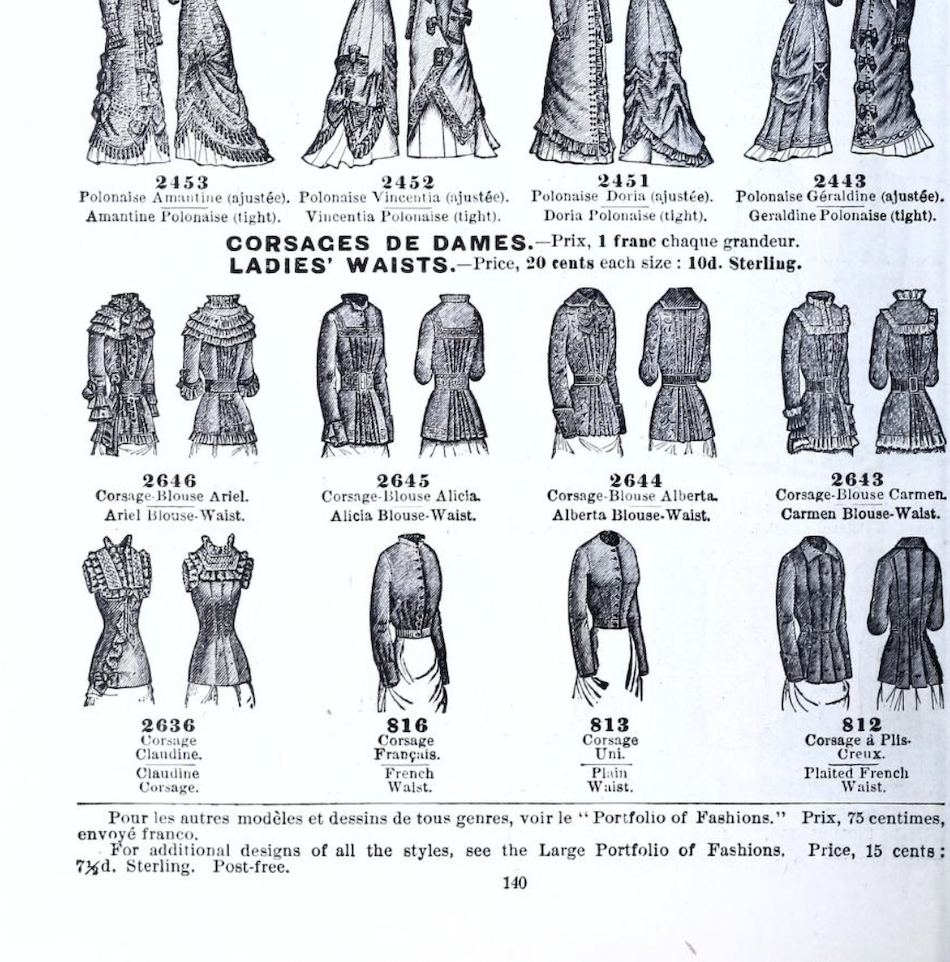

The term “corsage” peaked in usage in English publications between 1840 and 1860. It would then evolve to mean something new before peaking again in 1940.
Devant-de-corsage
And as for the corsage up for auction at Christie’s? The term refers to large pieces of adornment worn on the bodice, also known as “stomachers” in English. In England and America, “stomacher” most often referred to the elaborate bodice inserts that I covered in my post Stomachers: 18th century status symbols. In other parts of the world, it referred to the jewels worn in the same area.
Below is an image of the devant-de-corsage currently offered at auction.
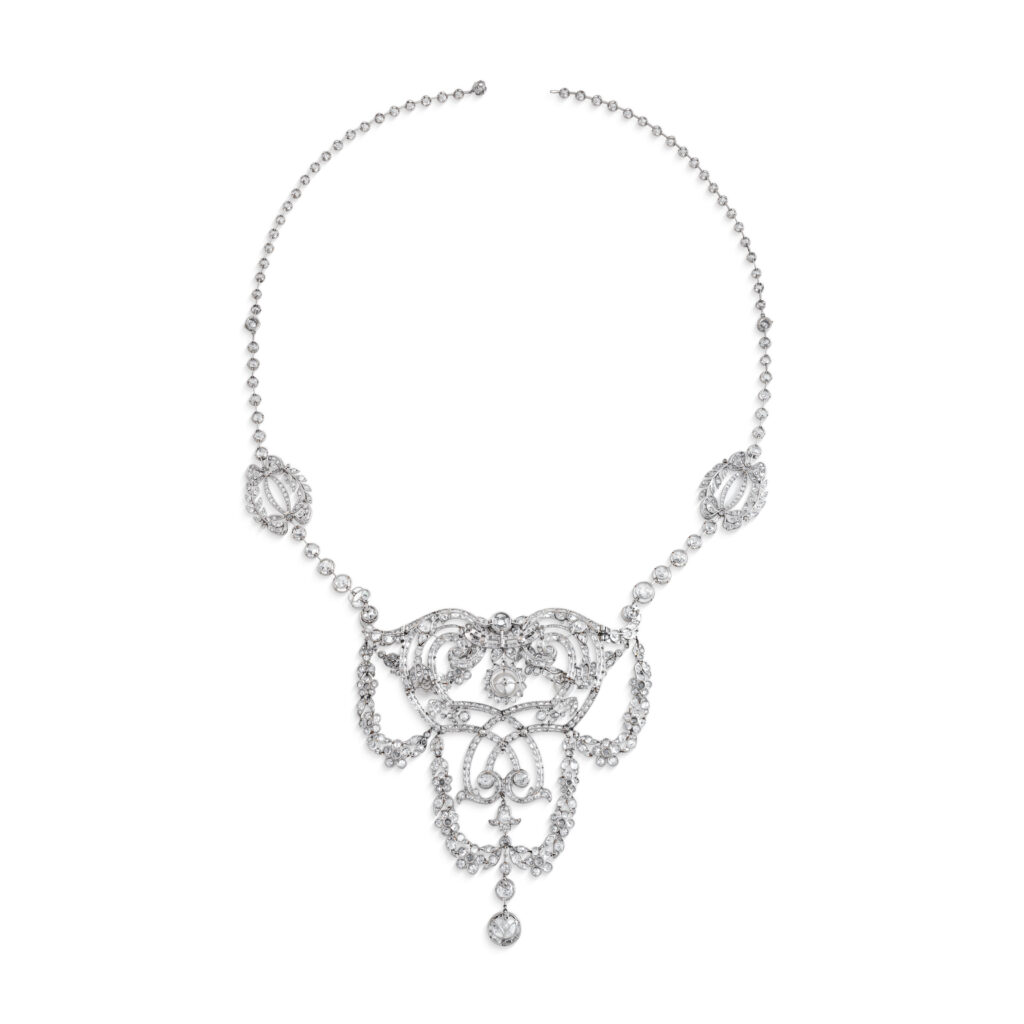
The beautiful accessory was made for Dame Nellie, one of the most famous opera singers of the late Victorian era. It was commissioned for her to wear to the coronation of King Edward VII.
I will cover devant-de-corsage more in a future post, but for now, I will leave you with these lovely examples.


Where we are now: bouquet-de-corsage
For many years “bouquet-de-corsage” referred to small, pin-on bouquets of flowers, real and artificial, used as additional accessories for the bodice of a dress. It was used perhaps for centuries in France and then came into particularly common use in England and America in the Victorian era. Take, for instance, the same issue of What to Wear and How to Make It:
“The materials must be trimmed with lace, and artificial flowers are used for bouquet de corsage, head-dress, looped for double skirt, and various other forms of ornament. Necklaces are a form of jewelry only suitable for full dress, when the throat and shoulders are uncovered.”
It is hard to follow the rapid evolution the word experienced, but by 1911, “corsage” was being used in America and even England to almost exclusively refer to these miniature bouquets. I expect it had something to do with America increasingly being considered a main player in the fashion world and French terminology ceasing to be as trendy.
So – why did women wear bouquets-de-corsage? Many online sources repeat the idea that they were worn to ward off bad spirits or because they were given as gifts by lovers and suitors, but this is far too simplistic. It is clearly seen that bouquets-de-corsage were worn as common, popular accessories for centuries. Yes, good luck and courtship were sometimes involved, but only sometimes. More often they were collected as other accessories such as hairpins.
A corsage on the move
The corsage is an accessory on the move! In the 18th and early 19th century it is shown most commonly in the center of the neckline.

Image source: V&A Museum
It then makes a shift to the shoulder.


Why?
I came across multiple blog posts on the topic that repeated the same notion that it was moved to the shoulder from the neckline because, given that corsages were given as gifts from suitors and suitors would have often been responsible for pinning said corsage, it was necessary due to the chest being an inappropriate place for a female to be touched.
Let me break down why I believe this to be a faulty premise.
- Corsages were just as common in the 18th century as in the 19th. They happily adorned the neckline for many years, even as they were being given as gifts.
- Corsages were only occasionally given as gifts, thus not requiring an entirely new placement.
- From what I can tell, prior to the 20th century, the tradition, so the speak, of pinning a corsage on the recipient wasn’t as much of a thing.
My argument is that the style simply changed. As with other Victorian fashion trends, the corsage became more extreme. They became much larger in size and would have obstructed a woman’s field of vision if worn in the middle of the neckline. At the very least, some of the corsages worn in the late 1800s would have been an annoyance if worn that way.

Another aspect of my argument about fashion and trends leading the way rather than morality is that the corsage was a massively popular embellishment to dresses between 1910 and 1930, and during that time they were all over the place, returning after to the shoulder by the 1940s.


After 1860 the next peak in the usage of the term would be in 1940. By this time they were popular both as accessories sold in stores to be used over and over again and also as gifts for special occasions. Use as an accessory would decline as women’s fashion became increasingly casual. As I said before, perhaps it is yet another trend from the past that we should welcome back.
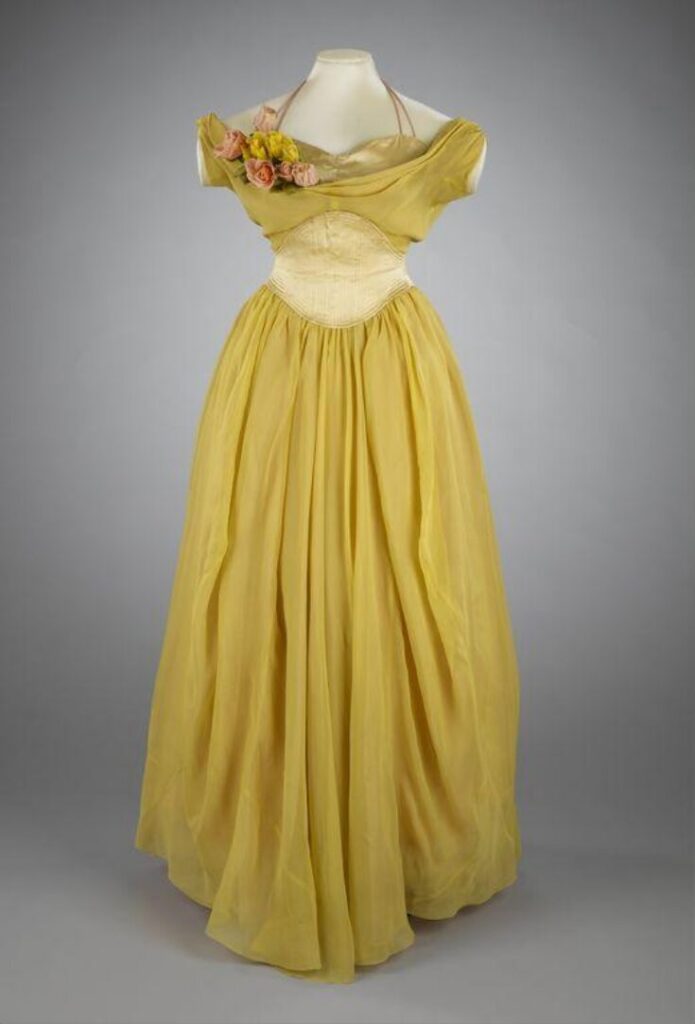
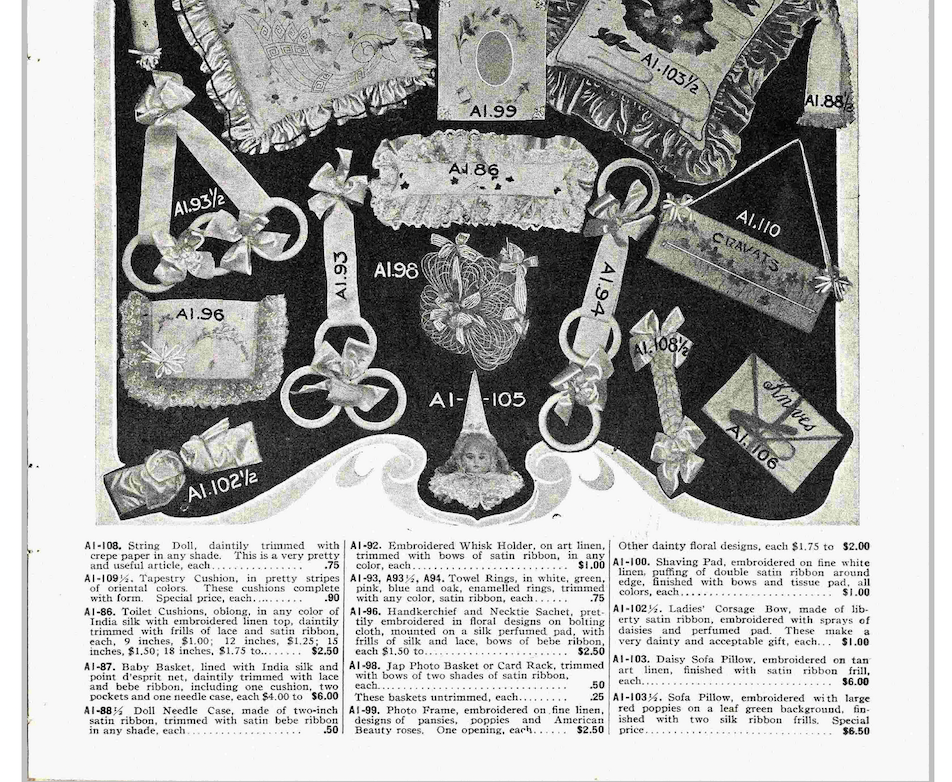
It clearly illustrates how common corsages were during the decade.
Did you enjoy this post? You may also enjoy:
Achieving the Gibson Girl S-silhouette: it’s all about the padding






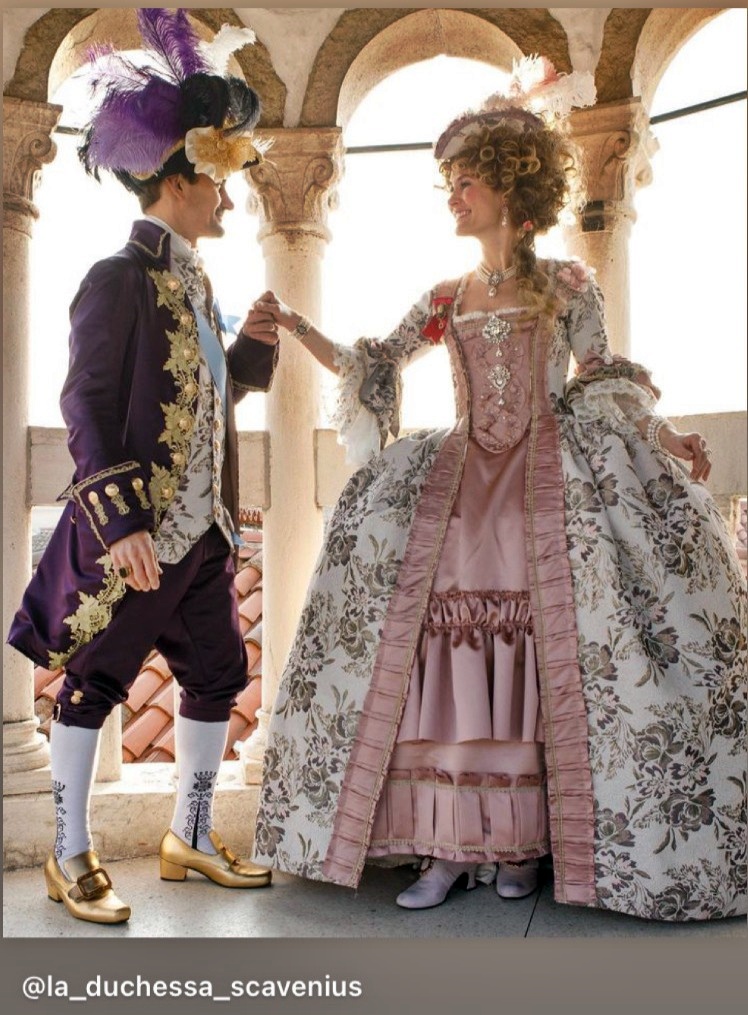



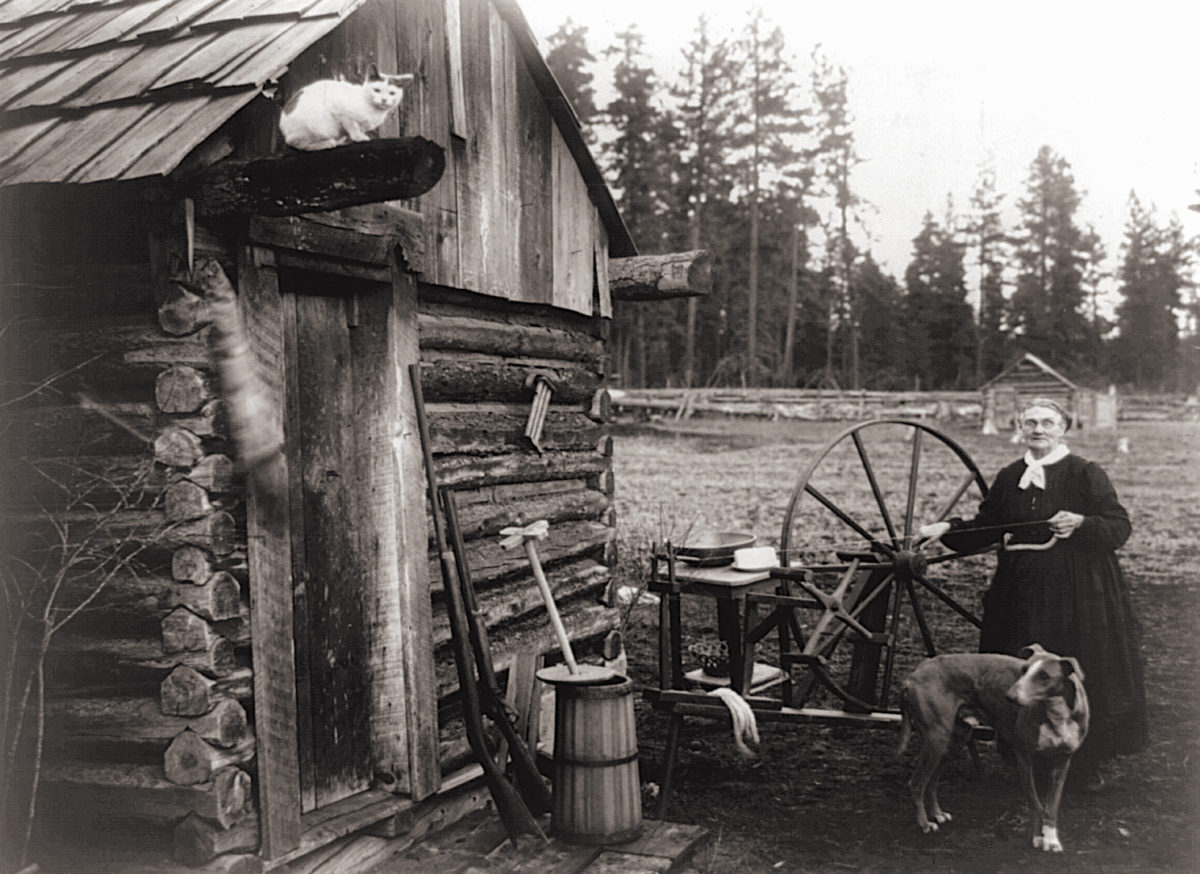




Hi Mary, I remember corsages, too!
I remember wearing Christmas corsages and getting a new one every year. It was a big deal to pick out a new corsage. Wore on our coats on the shoulder or by lapel.